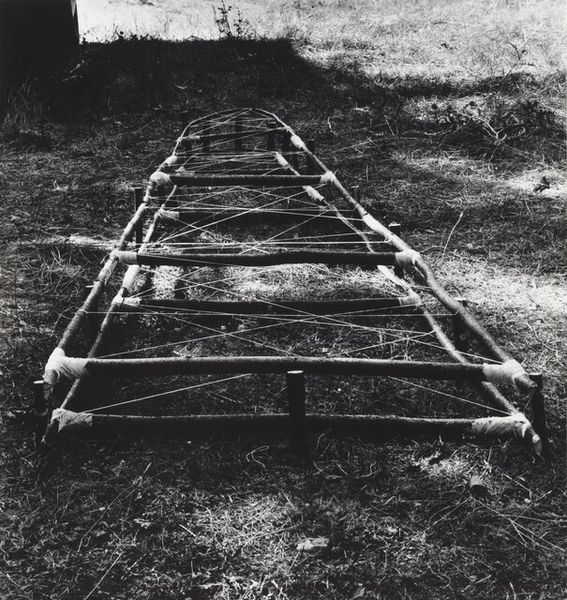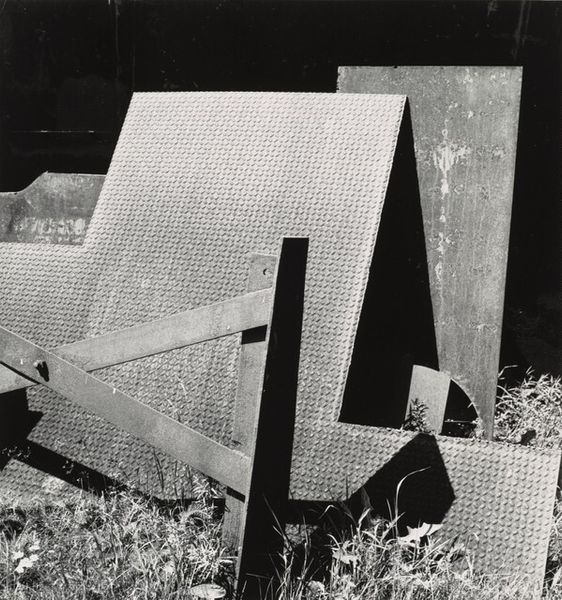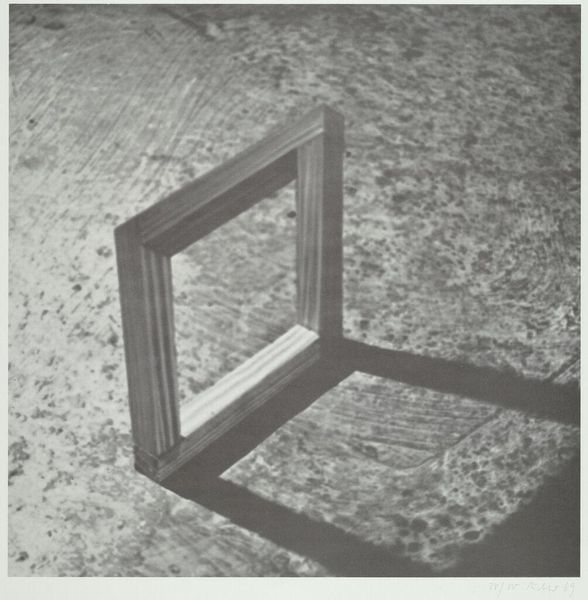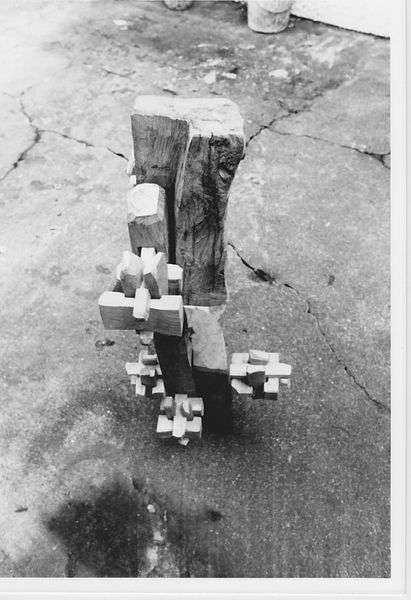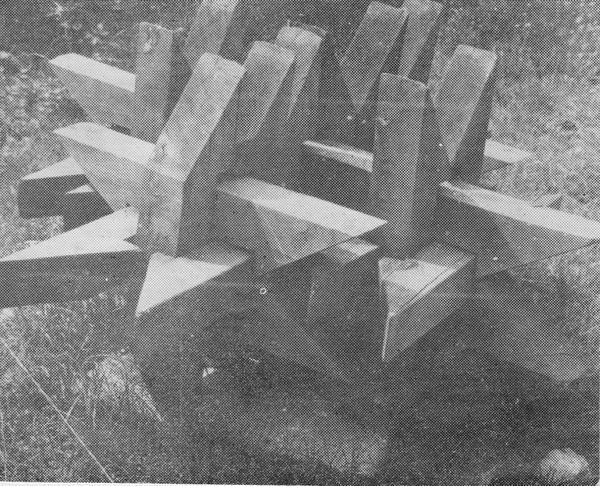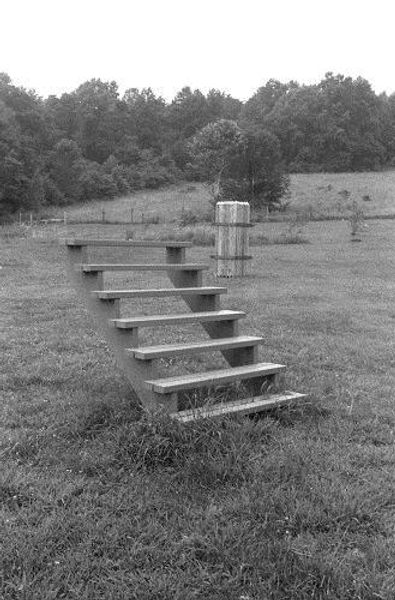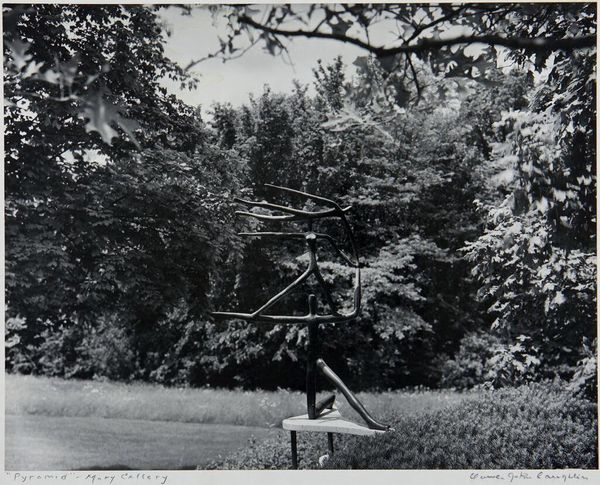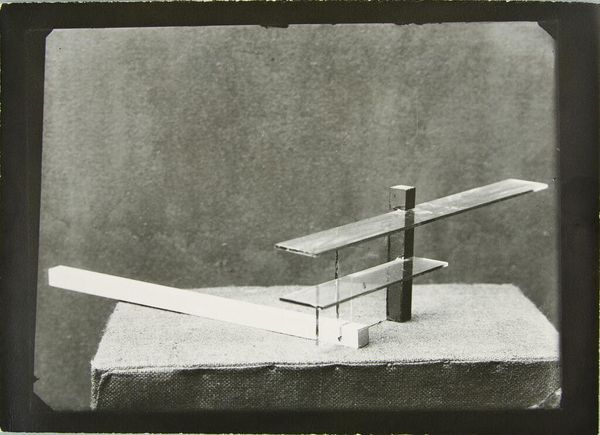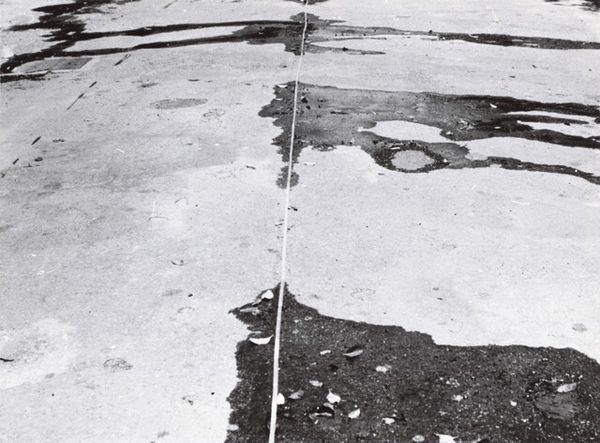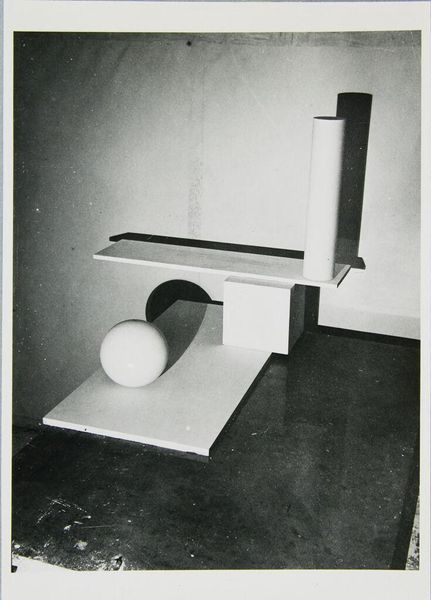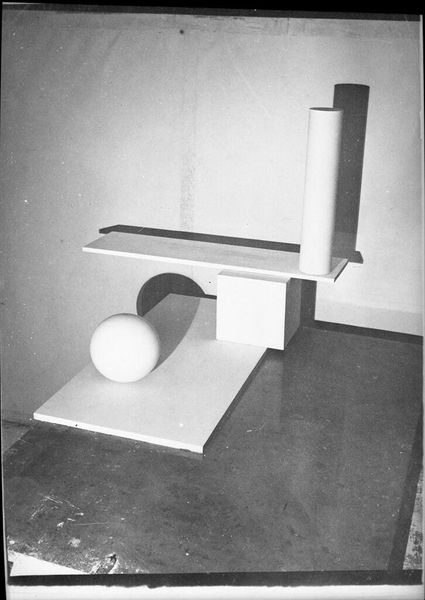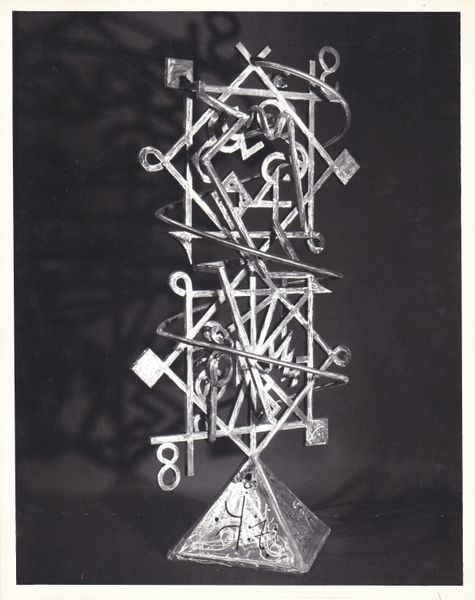
photography, sculpture, site-specific
#
conceptual-art
#
sculpture
#
land-art
#
photography
#
geometric
#
sculpture
#
site-specific
#
monochrome photography
#
monochrome
#
monochrome
Copyright: Markus Raetz,Fair Use
Editor: This photograph documents Markus Raetz's sculpture "Kopf," created in 1984. It seems to be made of logs arranged on a lawn. It feels almost like an archeological site, something monumental but also slightly absurd given the commonplace setting. What am I supposed to be seeing here? Curator: It’s crucial to consider where these site-specific pieces are placed and by whom. Raetz's choice of a public lawn alters the meaning and accessibility of sculpture. The photo also emphasizes a crucial layer, its reproducibility. What statement do you think Raetz is making by democratizing sculpture in such an intentional way? Editor: That's a really great point. He seems to be making the statement that artwork is accessible to everyone because you see an everyday scene as the backdrop for the sculpture. But also this photograph democratizes the art, too, since everyone can access this photo from all over the world. What social dynamics are in play, since there seems to be a kid sitting inside of it? Curator: The child situated within the installation is a fantastic example of that interplay of accessibility. I want to mention Raetz worked in land art with a goal of making artworks as something temporary. But I think, with site-specific sculpture, the role of the spectator really gets questioned, because the audience inevitably participates. So how does seeing a work outside the museum influence our experience? Editor: I think it breaks down the walls of preconceived notions that artwork has to be serious or highbrow. Bringing artwork to green spaces like this gives permission for anyone, even kids, to literally engage with the installation. Curator: Exactly. Raetz subverts the traditionally static museum experience by transforming outdoor space, in essence activating and democratizing it. Editor: It makes you think about what is really 'art', what are museums and what are outdoor public spaces for. I learned so much more. Curator: That intersection of social space and art experience is what makes this piece particularly impactful.
Comments
No comments
Be the first to comment and join the conversation on the ultimate creative platform.

